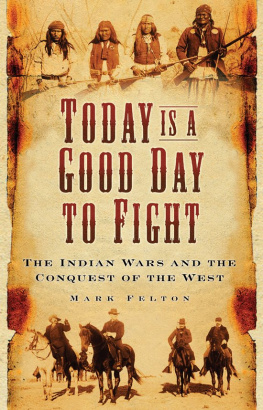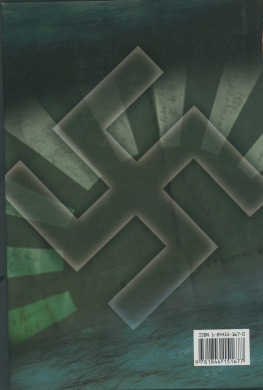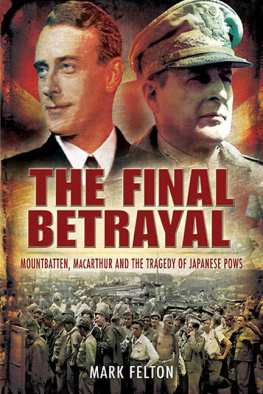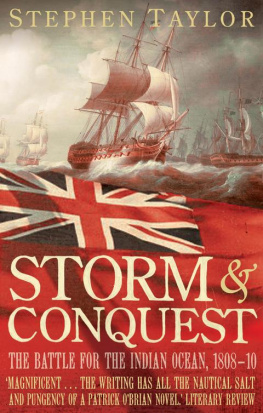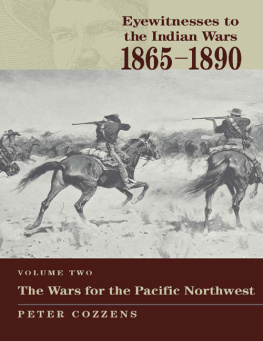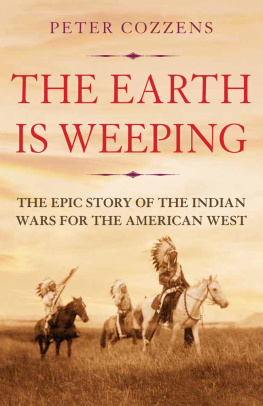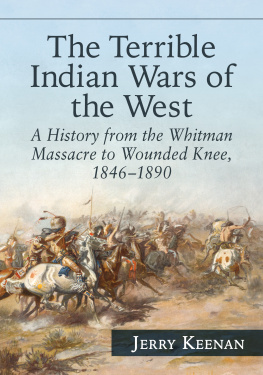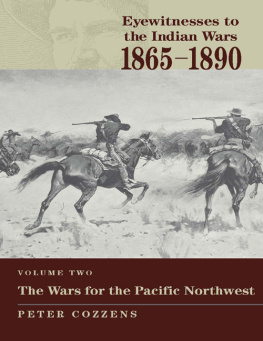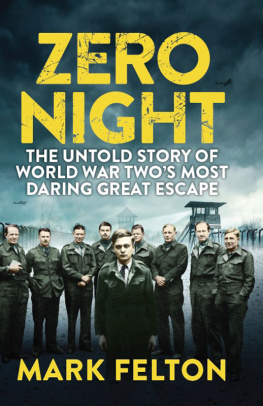Mark Felton - Today Is a Good Day to Fight: The Indian Wars and the Conquest of the West
Here you can read online Mark Felton - Today Is a Good Day to Fight: The Indian Wars and the Conquest of the West full text of the book (entire story) in english for free. Download pdf and epub, get meaning, cover and reviews about this ebook. year: 2009, publisher: The History Press, genre: Politics. Description of the work, (preface) as well as reviews are available. Best literature library LitArk.com created for fans of good reading and offers a wide selection of genres:
Romance novel
Science fiction
Adventure
Detective
Science
History
Home and family
Prose
Art
Politics
Computer
Non-fiction
Religion
Business
Children
Humor
Choose a favorite category and find really read worthwhile books. Enjoy immersion in the world of imagination, feel the emotions of the characters or learn something new for yourself, make an fascinating discovery.
- Book:Today Is a Good Day to Fight: The Indian Wars and the Conquest of the West
- Author:
- Publisher:The History Press
- Genre:
- Year:2009
- Rating:5 / 5
- Favourites:Add to favourites
- Your mark:
- 100
- 1
- 2
- 3
- 4
- 5
Today Is a Good Day to Fight: The Indian Wars and the Conquest of the West: summary, description and annotation
We offer to read an annotation, description, summary or preface (depends on what the author of the book "Today Is a Good Day to Fight: The Indian Wars and the Conquest of the West" wrote himself). If you haven't found the necessary information about the book — write in the comments, we will try to find it.
Today Is a Good Day to Fight: The Indian Wars and the Conquest of the West — read online for free the complete book (whole text) full work
Below is the text of the book, divided by pages. System saving the place of the last page read, allows you to conveniently read the book "Today Is a Good Day to Fight: The Indian Wars and the Conquest of the West" online for free, without having to search again every time where you left off. Put a bookmark, and you can go to the page where you finished reading at any time.
Font size:
Interval:
Bookmark:



T HE I NDIAN W ARS AND THE
C ONQUEST OF THE W EST
M ARK F ELTON

For Fang Fang, my inspirational wife
First published 2009
The History Press
The Mill, Brimscombe Port
Stroud, Gloucestershire, GL 5 2 QG
www.thehistorypress.co.uk
This ebook edition first published in 2013
All rights reserved
Mark Felton, 2009, 2013
The right of Mark Felton to be identified as the Author of this work has been asserted in accordance with the Copyrights, Designs and Patents Act 1988.
This ebook is copyright material and must not be copied, reproduced, transferred, distributed, leased, licensed or publicly performed or used in any way except as specifically permitted in writing by the publishers, as allowed under the terms and conditions under which it was purchased or as strictly permitted by applicable copyright law. Any unauthorised distribution or use of this text may be a direct infringement of the authors and publishers rights, and those responsible may be liable in law accordingly.
EPUB ISBN 978 0 7524 9662 7
Original typesetting by The History Press
CONTENTS
ACKNOWLEDGMENTS
The author would like to extend his thanks to many individuals, institutions and organisations. A great many thanks to my editor Simon Hamlet and the staff at The History Press. Some of the topics in this book stem from original research undertaken during my MA and PhD study at the University of Essex, and I would like to extend my thanks to Dr Colin Samson, Dr Mary Ellen Curtin and Dr Edward Higgs, and also to the staff at the Albert Sloman Library. I should like to acknowledge the kind assistance of the following individuals: Dr Karen Jones at the University of Kent; Dr Sarah Carter of the University of Calgary; Dr Faye Hammill of the British Journal of Canadian Studies; Carmen Harry of the Royal Canadian Mounted Police Museum in Regina; and Dr Joy Porter of the University of Wales Swansea. Many thanks to the following institutions and organisations: the British Library; the British Museum; The National Archives (Public Record Office), Kew; the National Archives (NARA), Washington, DC; the National Archives of Canada, Ottawa; the Museum of Civilisation in Hull, Quebec; the Museum of Anthropology, University of Cambridge; the Royal Historical Society; the International Council for Canadian Studies; Idaho State Historical Society; and the British Association for Canadian Studies. Finally, I owe a great debt of thanks to my wife, Fang Fang, who has tirelessly encouraged me in my writing over the years, and whose belief is so appreciated.
INTRODUCTION
I am a red man. If the Great Spirit had desired me to be a white man he would have made me so in the first place. He put in your heart certain wishes and plans, in my heart he put other and different desires. Each man is good in his sight. It is not necessary for Eagles to be Crows. We are poor but we are free. No white man controls our footsteps. If we must die we die defending our rights.
Sitting Bull, Hunkpapa Sioux
Sun-blackened and bloated corpses lay spread across the dusty hillsides over several square miles. Colonel John Gibbons infantry column had arrived on the banks of the Little Bighorn River in Montana Territory. It was 27 June 1876, and officers and men of the 7th Infantry, accompanied by survivors of the more famous 7th Cavalry, walked slowly among the prostrated bodies. Many were clustered together, others lay in stark isolation. All around the sun glinted off thousands of expended cartridge casings clustered in little piles in the short dry grass, and every so many yards a dead horse lay on its side, its legs stiff in the air. Some horses were still alive, an animal standing here and there, black flies swarming over their bleeding wounds, heads down and bridles trailing on the ground.
The human bodies were unrecognisable, both from lying out in the hot sun for two days, and for the furious assaults they had sustained from their enemies, both in life and after death. Heads were missing from some, arms and legs from others. Some were missing noses, eyes or ears, others a finger or a hand. Most had been scalped, many had cut throats, and most had been gutted from sternum to crotch, stinking guts lying in fetid piles beside their bodies. Many of the soldiers bodies were shot so full of arrows that they resembled porcupines. All were naked, save for scraps of blood-soaked underwear or an odd sock, their uniforms and equipment long since carried off the field as trophies and spoils of war.
Atop a conical hill above the river valley the corpses were particularly thick, many lying in tight groups beside dead horses, marking a long retreat from the river to high ground. A ring of six dead horses atop the hill marked the final redoubt in what had evidently been a grim fight to the death, and behind the horses lay seven more corpses in various states of undress and decomposition. Gibbons men and the cavalry officers went from body to body with handkerchiefs clamped over their faces to ward off the stench of decay, vainly attempting to find friends and colleagues. This battle, and its bloody aftermath, has come to symbolise the struggle for the American West. Its legacy was used as a reason to eradicate the Indians from their ancestral lands, lands the Indians had inhabited for millennia.
A Lakota Sioux story tells of two men who were on a hunting trip when they noticed a beautiful young woman walking towards them across the prairie. She was dressed in white buckskins and carried a bundle on her back. One of the men had bad thoughts about her and threatened her with his bow, but the moment he approached her he was suddenly surrounded by a white mist. When the mist dispersed, nothing of the man remained but his skeleton. The beautiful woman turned to the other warrior and told him to go home and prepare a big tepee for her. The man ran home and did exactly what she had told him to do. When the woman walked into his village, he had already completed his task. She then told the people of the village that she came from heaven and was here on earth to teach them how to live and what their future would be. She gave the people maize, showed them the use of the pipe and taught them the seven sacred ceremonies. Furthermore, she gave them colours for the four winds or directions. When she was finished she turned into a white buffalo calf, then turned its colour black, then red, then last she turned yellow, representing the colours of the four directions. Then she disappeared. This story explained to the Sioux how their society was formed in the past. It was a creation story. At the centre of that society was the buffalo, the symbolic animal of the American West that white people almost made extinct, along with the Indians who depended upon it to survive.
The American West can mean many things to many people: it can be the story of hardy pioneers going west in covered wagons; it can be the Frontier culture of cowboys, one-horse towns and range wars; it can be the Gold Rush and the intrepid 49ers with their picks and pans; it can be hunters, fur trappers and backwoodsmen living with nature and overcoming immense physical challenges. It can be any of these and more. In the case of this book it is the wars that ceaselessly ravaged the American West throughout the second half of the nineteenth century, as white Anglo-American culture clashed with the indigenous culture of the regions original inhabitants, the American Indians.
Next pageFont size:
Interval:
Bookmark:
Similar books «Today Is a Good Day to Fight: The Indian Wars and the Conquest of the West»
Look at similar books to Today Is a Good Day to Fight: The Indian Wars and the Conquest of the West. We have selected literature similar in name and meaning in the hope of providing readers with more options to find new, interesting, not yet read works.
Discussion, reviews of the book Today Is a Good Day to Fight: The Indian Wars and the Conquest of the West and just readers' own opinions. Leave your comments, write what you think about the work, its meaning or the main characters. Specify what exactly you liked and what you didn't like, and why you think so.

